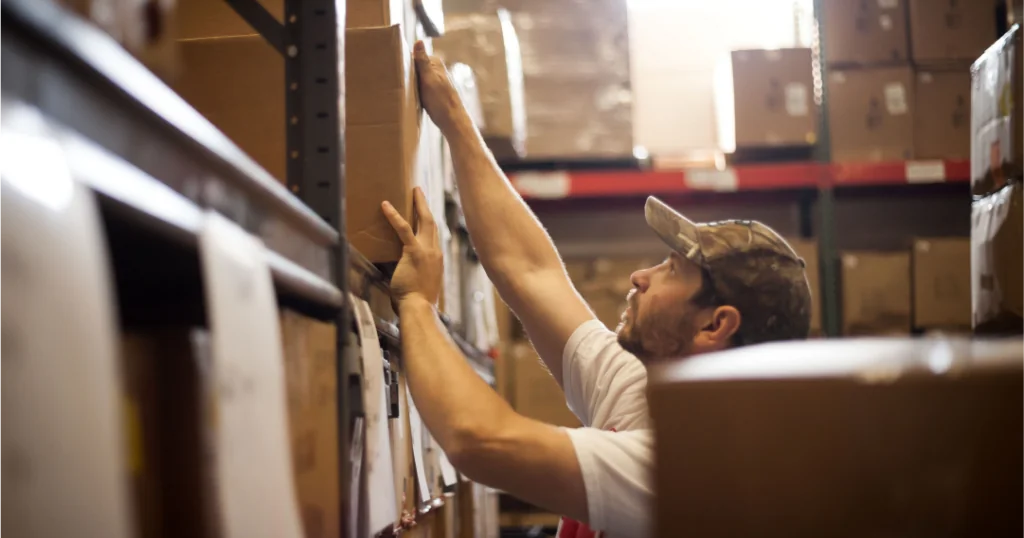Retail losses extend beyond the visible issues of theft and damage, encompassing a complex web of factors such as administrative errors, supplier fraud, and markdowns that all contribute to Total Retail Loss (TRL).
Read on as we will dissect the complexities of TRL for you, and explore how ThinkLP is reshaping loss prevention, offering tailored solutions that meet the retail industry’s unique demands.
What is Total Retail Loss (TRL)?
TLR is a comprehensive term that captures all the possible avenues of loss in the retail industry. It’s not just about theft or damaged goods; it also includes administrative errors, supplier fraud, and even losses due to markdowns or waste.
Definition and History
The concept of Total Retail Loss, made famous by Professor Adrian Beck from the University of Leicester, offers a holistic view of retail loss. He asserts that any event or circumstance resulting in reduced retail profit should be considered under TRL. This includes known losses (like theft or damage), unknown losses (such as administrative errors), and even non-loss events that still reduce profit (like markdowns).
Over the years, the understanding of loss in the retail industry has evolved. Initially, it was mainly associated with ‘shrinkage’, which referred to theft by customers or employees, and damaged goods. As the retail landscape became more complex, it was clear that this definition was too narrow.
Late 2000s – The Emergence of Total Retail Loss Concept: The retail industry began to recognize the limitations of the traditional definition of retail loss. The focus primarily was on shrinkage due to theft.
2010-2015 – Broadening the Perspective: The TRL approach broadened the perspective to encompass a wide range of factors that could erode retail profits. Factors included waste, markdowns, stock discrepancies, process failures, and fraud. It provided a more comprehensive understanding of losses, enabling retailers to identify and measure their losses more effectively.
2016 – 2020 – Adoption and Implementation: Many retailers started implementing the TRL concept into their operations from 2016 onwards. This holistic approach helped manage their losses more effectively, resulting in improved profitability and operational efficiency.
2021 – Present – Advancements and Refinements: Today, while the concept of TRL is not yet universally accepted in the retail industry, a growing number of forward-thinking businesses are recognizing its value.
These companies are incorporating TRL into their loss prevention strategies, contributing to significant improvements in profitability. ThinkLP helped to pave the way for more strategic and effective loss prevention efforts within the retail sector.

Shrinkage vs. Retail Loss Explained
The words ‘shrinkage’ and ‘retail loss’ are frequently used as if they mean the same thing in the retail sector, which can cause a lot of confusion. But, each term has its specific meaning and effect.
‘Shrinkage’ usually means the loss of goods due to things like theft by employees, shoplifting, fraud by suppliers, or mistakes made by cashiers.
On the other hand, ‘retail loss’ is a broader term that covers not just known losses like shrinkage, but also unknown and unintentional ones. These could be losses from errors at self-checkout points, issues within the system, or poorly executed promotions.
The difference in these definitions can lead to misunderstandings, particularly when retailers are trying to find out and deal with the main causes of their losses.
Challenge in Retail Loss Prevention
Retail loss prevention is a complex field that comes with a lot of challenges. Overcoming these following problems requires a comprehensive approach that includes adopting new technologies, leveraging data, training employees, and balancing security with customer satisfaction:
- Lack of Standardized Measurements: One big problem in retail loss prevention is the lack of universally accepted metrics for evaluating and comparing shrinkage and overall retail loss. Different retailers may blame their losses on different things based on their specific situations and the data they have. This lack of consistency makes it hard to compare performance or come to conclusions about the industry as a whole. Also, without a set way of measuring, retailers may find it hard to accurately judge how well their strategies to prevent loss are working.
- Emerging Technologies: Technology’s progress can be tricky for loss prevention. Sure, it gives us new tools to reduce losses, but it also creates opportunities for theft and fraud. For instance, self-checkout lanes can increase the risk of theft, and e-commerce platforms can be targets for cybercriminals.
- Data Management and Analysis: Retailers usually have a lot of data, but figuring out what it all means can be tough. It’s really important to analyze this data well to spot where losses are happening and where things could get better.
- Employee Training: Employees play a vital role in loss prevention, but training them effectively can be a challenge. This includes not only educating them about loss prevention techniques but also fostering a culture of honesty and integrity.
- Balancing Loss Prevention and Customer Experience: Retailers need to implement loss prevention measures without negatively affecting the customer experience. Overly intrusive measures can deter customers and harm the business.
- Organized Retail Crime: Organized retail crime involves coordinated thefts from retailers and is a growing problem. These crimes are often more sophisticated and harder to prevent than individual instances of shoplifting.
That’s Why Total Retail Loss Exists
Because of these problems, a Total Retail Loss (TRL) concept was developed to provide retailers with a more comprehensive view of losses. This method differentiates between inventory shrinkage, and other forms of loss due to “honest” mistakes and operational inefficiencies. Cost is a different concept altogether.
TRL includes all potential sources of loss, guiding retailers to comprehend both current and future risks, and to make focused investments to enhance their profitability.
Embracing TRL has been key in changing the industry’s thinking from merely fighting shrinkage to managing all forms of retail loss. This broader perspective has enabled retailers to handle the intricacies of their operations more efficiently and come up with more effective strategies for preventing loss.
ThinkLP and TRL
ThinkLP redefines retail loss prevention by adopting a tech-driven approach. It’s not just about simply identifying retail loss anymore; ThinkLP provides retailers with actionable insights to prevent and recover losses.
Unlike traditional strategies that focus mostly on physical security, ThinkLP uses data analytics, real-time monitoring, and predictive modeling for a proactive approach. Key features include advanced analytics to detect irregular patterns in transactional and operational data, inventory management tools to optimize stock levels, and employee training modules. The integration of IoT devices and RFID technology offers real-time tracking of merchandise, improving inventory accuracy.
ThinkLP does not just address shrinkage but the wider issue of Total Retail Loss, providing retailers with a comprehensive solution to protect their profits and enhance efficiency.
As retail loss prevention evolves with new technologies like AI and machine learning, ThinkLP’s approach remains adaptable and innovative, always ready to minimize loss and stay ahead of threats.

Important Components of TRL for Retailers to Know
The Total Retail Loss concept includes two main parts: Known and Unknown Losses, and Malicious and Non-Malicious Losses.
Known vs. Unknown Losses
Known losses in retail are those where you can identify the cause. We gathered for you a couple of common examples:
- Theft: This is one of the most significant sources of known loss. It can occur from shoplifting by customers, theft by employees, or organized retail crime groups.
- Damage: Products can become damaged during handling or storage. This includes breakages, spills, and damage due to improper storage conditions.
- Administrative Errors: Mistakes in pricing, inventory management, or record-keeping can lead to discrepancies between actual and recorded stock levels.
- Vendor Fraud: Suppliers might deliver fewer goods than invoiced or deliver lower-quality items than agreed upon.
- Spoilage: For retailers dealing with perishable goods like food or flowers, spoilage is a significant source of loss.
Unknown losses in the retail industry are typically those that occur without any clear, identifiable cause. These losses are often discovered during inventory checks when the physical stock count is less than what the records indicate:
- Unrecorded Sales: Occasionally, sales might not be recorded due to cashier errors or system malfunctions, leading to discrepancies between the physical and recorded stock.
- Inaccurate Stock Checks: Sometimes, stock checks can be inaccurate due to human error or system inaccuracies, leading to discrepancies between the physical and recorded stock.
- Misplaced Items: Items can be misplaced within the store or in the storage area, leading to them being considered as lost until they are found.
- Documentation Errors: Errors in paperwork, such as incorrect entry or omission of data, can lead to an apparent loss of stock.
- Unaccounted Waste or Damage: If items are damaged or disposed of without proper recording, it can result in unknown losses.
Malicious vs. Non-Malicious Losses
When we talk about malicious losses, we focus on those that occur due to intentional acts of wrongdoing. Take a look at the following examples to get a better understanding:
- Shoplifting: This is a common form of malicious loss where customers intentionally steal merchandise from the store.
- Employee Theft: Employees may steal merchandise, cash, or other assets from the business.
- Fraud: Fraud can involve various actions, such as return fraud (returning stolen items for a refund or credit), coupon fraud, or credit card fraud.
On the other hand, non-malicious losses are unintentional and often result from operational inefficiencies or mistakes:
- Administrative Errors: Mistakes in pricing, inventory management, or record-keeping can lead to discrepancies between actual and recorded stock levels4.
- Vendor Errors: Suppliers might deliver fewer goods than invoiced or deliver lower-quality items than agreed upon.
- Damage or Spoilage: Products can become damaged during handling or storage. This includes breakages, spills, and damage due to improper storage conditions. For retailers dealing with perishable goods like food or flowers, spoilage is a significant source of non-malicious loss.
To develop an effective loss prevention strategy for your business, it’s important for you to understand these components of Total Retail Loss.
Once you identify the sources of both known and unknown losses, and distinguish between malicious and non-malicious causes, you can implement targeted measures to minimize their impact.

What’s Next? Embrace ThinkLP!
Join thousands of leading loss prevention (LP), risk, and safety professionals protecting people and profit on ThinkLP. A whopping 96% of clients say ThinkLP has transformed their operations, automating tedious processes and delivering insightful reports.
Start Moving Your Organization Towards TRL
Moving your organization towards TRL can seem overwhelming due to the large data requirements. But there are simple steps retailers can take to support this process. ThinkLP has the capability to streamline this data, and to merge datasets that retailers might otherwise struggle to integrate. We provide you with an all-in-one platform for case management, smart audits, analytics, and more, thereby simplifying the process and aiding retailers in their move towards TRL. [Contact Us]
Discover our ThinkLP Blog
Are you looking for clear advice on how to prevent losses, manage risks, and ensure safety in retail? The ThinkLP blog can help. It covers a variety of topics, from using technology to combat organized retail crime, to how to boost your team’s success. [Read More]


